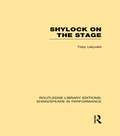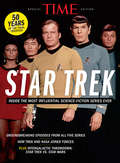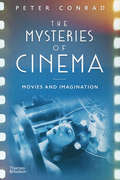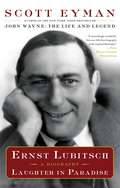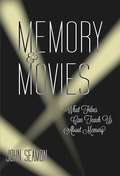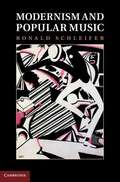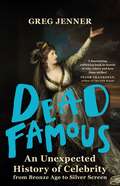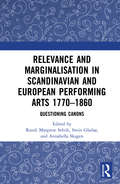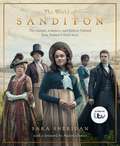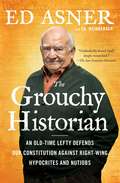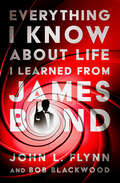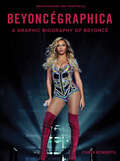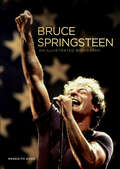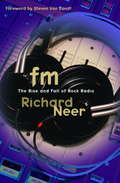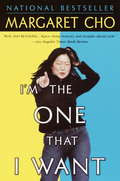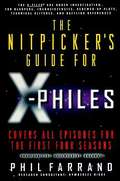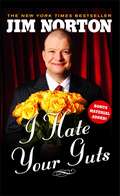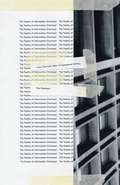- Table View
- List View
Shylock on the Stage (Routledge Library Editions: Shakespeare in Performance)
by Toby LelyveldOriginally published in 1961, this book is a study of the ways actors since the time of Shakespeare have portrayed the character of Shylock. A pioneering work in the study of performance history as well as in the portrayal of Jews in English literature. Specifically it studies Charles Macklin, Edmund Kean, Edwin Booth, Henry Irving and more recent performers.
TIME Star Trek: Inside the Most Influential Science Fiction Series Ever
by The Editors of TIMEFifty years after the birth of the Star Trek phenomenon, the legacy is as alive as ever. In 2016 and 2017, both a new film and television installation will be added to the historic franchise, totaling thirteen feature films and six television series, causing Trekkies to rejoice around the world. The Star Trek series has not only captivated our imaginations, but also our hearts as we adventure alongside Captain Kirk, Captain Picard, Spock and so many more favorite characters through galaxies and lightyears.Relive your favorite moments on this landmark anniversary in the all-new, special edition from TIME, Star Trek: Inside the Most Influential Science-Fiction Series Ever. Starring some of the most iconic characters in Hollywood history ¿ from human beings to extraterrestrials ¿ Star Trek examines how these two species work together to better understand the universe in which they live. Over the past fifty years, Star Trek has explored the future, and perhaps more importantly, the human condition, inspiring Trekkies all around the world to live long and prosper.
The Mysteries of Cinema: Movies And Imagination
by Peter ConradRanging from the late nineteenth century to the present day, this exhilarating survey by cultural critic Peter Conrad explores the ways film has changed how we see the world. This is a thematic roller-coaster ride through cinema history, with film expert Peter Conrad in the seat beside you. Thoroughly international, this book ranges from Fay Wray to Satyajit Ray, from Buster Keaton to Kurosawa, from westerns to nouvelle vague. Conrad explores the medium’s relationship to speed, technology, fantasy, horror, dream, color, sound, light, and shadow with reference to scores of films, from the earliest nineteenth-century silent experiments to the latest multisensory Hollywood blockbusters. The author’s insights are amplified by voices from inside and outside the industry: directors and critics are included alongside artists, writers, philosophers, and historians ranging from Leo Tolstoy to Salvador Dalí, Theodor Adorno to Philip Roth. Arranged by topics, such as “Meta-Movie” and “The Physics of Film,” rather than chronological events, The Mysteries of Cinema focuses on film’s otherworldly, hypnotic, and magical qualities. Perfect for both movie fans who will discover new films and directors, and for students of film who will see familiar classics in a new light, this volume is full of unique insights into the genre. Combining his vast knowledge with a forensic eye for a director’s every quirk and mannerism, Conrad offers a fascinating and thrilling exploration of film.
Ernst Lubitsch: Laughter in Paradise
by Scott Eyman"Highly recommended" (Library Journal): The only full-length biography of legendary film director Ernst Lubitsch, the director of such Hollywood classics as Trouble in Paradise, Ninotchka, and The Shop Around the Corner.In this groundbreaking biography of Ernst Lubitsch, undeniably one of the most important and influential film directors and artists of all time, critic and biographer Scott Eyman, author of the critically acclaimed New York Times bestseller John Wayne, examines not just the films Lubitsch created, but explores as well the life of the man, a life full of both great successes and overwhelming insecurities. The result is a fascinating look at a man and an era--Hollywood's Golden Age. Born in Berlin and transported to Hollywood in the 1920s with the help of Mary Pickford, Lubitsch brought with him a level of sophistication and subtlety previously unknown to American movie audiences. He was quickly established as a director of unique quality and distinction. He captivated audiences with his unique "touch," creating a world of fantasy in which men are tall and handsome (unlike Lubitsch himself) and humorously adept at getting women into bed, and where all the women are beautiful and charming and capable of giving as well as receiving love. He revived the flagging career of Marlene Dietrich and, in Ninotchka, created Greta Garbo's most successful film. When movie buffs speak of "the Lubitsch touch," they refer to a sense of style and taste, humor and humanity that defined the films of one of Hollywood's all-time great directors. In the history of the medium, no one has ever quite equaled his unique talent. Written with the cooperation of an extraordinary ensemble of eyewitnesses, and unprecedented access to the files of Paramount Pictures, this is an enthralling biography as rich and diverse as its subject--sure to please film buffs of all types, especially those who champion Lubitsch as one of the greatest filmmakers ever.
Film Genere Holywood And Beyond
by Barry LangfordThe overall approach of Film Genre: Hollywood and Beyond situates genres in their historical - primarily, cultural and (film) industrial contexts; the overarching context of the book is the transition from the ‘classical’ Hollywood system to a ‘post-classical’ mode that extends to the present day. In making this separation, I neither explicitly challenge nor endorse arguments about the extent to which ‘post-classical’ Hollywood represents a qualita¬tively different set of visual stylistics in Hollywood film.
Memory and Movies
by John SeamonIn the movie Slumdog Millionaire, the childhood memories of a young game show contestant trigger his correct answers. In Memento, the amnesiac hero uses tattoos as memory aids. In Away from Her, an older woman suffering from dementia no longer remembers who her husband is. These are compelling films that tell affecting stories about the human condition. But what can these movies teach us about memory? In this book, John Seamon shows how examining the treatment of memory in popular movies can shed new light on how human memory works. After explaining that memory is actually a diverse collection of independent systems, Seamon uses examples from movies to offer an accessible, nontechnical description of what science knows about memory function and dysfunction. In a series of lively encounters with numerous popular films, he draws on Life of Pi and Avatar, for example, to explain working memory, used for short-term retention. He describes the process of long-term memory with examples from such films as Cast Away and Groundhog Day; The Return of Martin Guerre, among other movies, informs his account of how we recognize people; the effect of emotion on autobiographical memory is illustrated by The Kite Runner, Titanic, and other films; movies including Born on the Fourth of July and Rachel Getting Married illustrate the complex pain of traumatic memories. Seamon shows us that movies rarely get amnesia right, often using strategically timed blows to the protagonist's head as a way to turn memory off and then on again (as in Desperately Seeking Susan). Finally, he uses movies including On Golden Pond and Amour to describe the memory loss that often accompanies aging, while highlighting effective ways to maintain memory function.
Modernism and Popular Music
by Ronald SchleiferTraditionally, ideas about twentieth-century 'modernism' - whether focused on literature, music or the visual arts - have made a distinction between 'high' art and the 'popular' arts of best-selling fiction, jazz and other forms of popular music, and commercial art of one form or another. In Modernism and Popular Music, Ronald Schleifer instead shows how the music of George and Ira Gershwin, Cole Porter, Thomas 'Fats' Waller and Billie Holiday can be considered as artistic expressions equal to those of the traditional high art practices in music and literature. Combining detailed attention to the language and aesthetics of popular music with an examination of its early twentieth-century performance and dissemination through the new technologies of the radio and phonograph, Schleifer explores the 'popularity' of popular music in order to reconsider received and seeming self-evident truths about the differences between high art and popular art and, indeed, about twentieth-century modernism altogether.
Dead Famous: An Unexpected History of Celebrity from Bronze Age to Silver Screen
by Greg Jenner'Fizzes with clever vignettes and juicy tidbits... [a] joyous romp of a book.' Guardian'A magical mystery tour through the history of celebrity - eye opening, provocative, triumphant.' Kate Williams, bestselling author and historian'A fascinating, rollicking book in search of why, where and how fame strikes. Sit back and enjoy the ride.' Peter FrankopanCelebrity, with its neon glow and selfie pout, strikes us as hypermodern. But the famous and infamous have been thrilling, titillating, and outraging us for much longer than we might realise. Whether it was the scandalous Lord Byron, whose poetry sent female fans into an erotic frenzy; or the cheetah-owning, coffin-sleeping, one-legged French actress Sarah Bernhardt, who launched a violent feud with her former best friend; or Edmund Kean, the dazzling Shakespearean actor whose monstrous ego and terrible alcoholism saw him nearly murdered by his own audience - the list of stars whose careers burned bright before the Age of Television is extensive and thrillingly varied. Celebrities could be heroes or villains; warriors or murderers; brilliant talents, or fraudsters with a flair for fibbing; trendsetters, wilful provocateurs, or tragic victims marketed as freaks of nature. Some craved fame while others had it forced upon them. A few found fame as small children, some had to wait decades to get their break. But uniting them all is the shared origin point: since the early 1700s, celebrity has been one of the most emphatic driving forces in popular culture; it is a lurid cousin to Ancient Greek ideas of glorious and notorious reputation, and its emergence helped to shape public attitudes to ethics, national identity, religious faith, wealth, sexuality, and gender roles. In this ambitious history, that spans the Bronze Age to the coming of Hollywood's Golden Age, Greg Jenner assembles a vibrant cast of over 125 actors, singers, dancers, sportspeople, freaks, demigods, ruffians, and more, in search of celebrity's historical roots. He reveals why celebrity burst into life in the early eighteenth century, how it differs to ancient ideas of fame, the techniques through which it was acquired, how it was maintained, the effect it had on public tastes, and the psychological burden stardom could place on those in the glaring limelight. DEAD FAMOUS is a surprising, funny, and fascinating exploration of both a bygone age and how we came to inhabit our modern, fame obsessed society.
Relevance and Marginalisation in Scandinavian and European Performing Arts 1770–1860: Questioning Canons
by Randi Margrete SelvikRelevance and Marginalisation in Scandinavian and European Performing Arts 1770–1860: Questioning Canons reveals how various cultural processes have influenced what has been included, and what has been marginalised from canons of European music, dance, and theatre around the turn of the nineteenth century and the following decades. This collection of essays includes discussion of the piano repertory for young ladies in England; canonisation of the French minuet; marginalisation of the popular German dramatist Kotzebue from the dramatic canon; dance repertory and social life in Christiania (Oslo); informal cultural activities in Trondheim; repertory of Norwegian musical clocks; female itinerant performers in the Nordic sphere; preconditions, dissemination, and popularity of equestrian drama; marginalisation and amateur staging of a Singspiel by the renowned Danish playwright Oehlenschläger, also with perspectives on the music and its composers; and the perceived relevance of Henrik Ibsen’s staged theatre repertory and early dramas. By questioning established notions about canon, marginalisation, and relevance within the performing arts in the period 1770–1860, this book asserts itself as an intriguing text both to the culturally interested public and to scholars and students of musicology, dance research, and theatre studies.
The World of Sanditon: The Official Companion to the ITV Series
by Sara SheridanThe official TV tie-in to accompany the ITV drama scripted by Andrew DaviesThe World of Sanditon delves behind the scenes of Sanditon, giving you the inside scoop on Jane Austen's unfinished masterpiece, adapted for television by Andrew Davies.Produced by Red Planet Pictures, ITV's Sanditon series tells the story of the joyously impulsive, spirited and unconventional Charlotte Heywood and her spiky relationship with the humorous, charming and slightly wild Sidney Parker. Written by Emmy and BAFTA-Award winning writer Andrew Davies, the series brought Austen's story to life and this book will allow you to go behind the scenes of the cast and crew, exploring the world that Austen created and offering fascinating insights about the period and about the real-life heartbreak behind her final story. Readers will also have access to location guides, interviews with the cast, and in-depth historical information by esteemed author Sara Sheridan.
The Grouchy Historian: An Old-Time Lefty Defends Our Constitution Against Right-Wing Hypocrites and Nutjobs
by Ed Asner Ed. WeinbergerIn the tradition of Al Franken and Michael Moore, Ed Asner—a.k.a. Lou Grant from The Mary Tyler Moore Show—reclaims the Constitution from the right-wingers who think that they and only they know how to interpret it.Ed Asner, a self-proclaimed dauntless Democrat from the old days, figured that if the right-wing wackos are wrong about voter fraud, Obama’s death panels, and climate change, they are probably just as wrong about what the Constitution says. There’s no way that two hundred-plus years later, the right-wing ideologues know how to interpret the Constitution. On their way home from Philadelphia the people who wrote it couldn’t agree on what it meant. What was the president’s job? Who knew? All they knew was that the president was going to be George Washington and as long as he was in charge, that was good enough. When Hamilton wanted to start a national bank, Madison told him that it was unconstitutional. Both men had been in the room when the Constitution was written. And now today there are politicians and judges who claim that they know the original meaning of the Constitution. Are you kidding? In The Grouchy Historian, Ed Asner leads the charge for liberals to reclaim the Constitution from the right-wingers who use it as their justification for doing whatever terrible thing they want to do, which is usually to comfort the comfortable and afflict the afflicted. It’s about time someone gave them hell and explained that progressives can read, too.
Everything I Know About Life I Learned From James Bond
by John L. Flynn Bob BlackwoodCelebrate the heroic swagger of Agent 007 with the ultimate fan&’s guide to all things James Bond.For millions of American men who grew up in the 1950s and 60s, James Bond was the ultimate masculine icon. He was stylish, smart, and sophisticated. He was ready for adventure, unafraid of danger, and irresistible to women. In short, he was everything his young male fans wanted to be. In this volume, authors Bob Blackwood and John L. Flynn think back on the importance of James Bond in their lives, and the lessons they learned from his movies and novels. Covering everything from cars and clothes to how to order a martini, this is a loving celebration of the man they call &“Bond, James Bond.&”
Restoration Plays and Players
by David RobertsIntroducing readers to the key texts, theatrical practice and context of late seventeenth-century drama, David Roberts combines literary and theatrical approaches to show how Restoration plays were written, performed, received and printed. Structured according to the 'life cycle' of the dramatic text, this book reproduces extracts from twenty-four of the most influential Restoration plays to provide readers with a comprehensive and colourful introduction to the period's drama. Roberts encourages readers to look beyond a limited canon of established plays and practice, and to see how Restoration Drama has been revived and adapted on the modern stage. Restoration Plays and Players is of great interest to undergraduate and non-specialist readers of seventeenth-century drama, Restoration literature and theatre studies.
Beyoncégraphica: A Graphic Biography of Beyoncé
by Chris RobertsAn easy-to-read biography of “the most important and compelling popular musician of the twenty-first century,” includes infographics and photos (TheNew Yorker).Beyoncé needs no introduction. Singer, artist, activist and icon, she is worshiped by her many fans around the word.This stunning graphic biography tells the story of how a young singer from Texas transformed into a global superstar, celebrating the highlights and successes of her career through stunning new graphics, photographs and illustrations. Representing so much more than the pop industry, through philanthropy, politics and campaigning, Beyoncé has broken the mould of what it means to be a superstar—and that star just continues to rise.From costume changes to record sales, her impressive vocal range to her work off-stage, this original bio-graphic book charts the success of the icon who came to dominate the charts, our screens and even our wardrobes. An absolute must for any “Beehive” members and Beyoncé fans.
Bruce Springsteen: An Illustrated Biography
by Meredith OchsA biography of the Boss from the streets of Freehold to rock stardom to the Broadway stage, loaded with performance and candid photos.Through story, images, and memorabilia, Bruce Springsteen: An Illustrated Biography chronicles the life of The Boss—one of America’s favorite rock stars and one of the biggest-selling artists in history. Springsteen’s monolithic music career spans over a half-century, from 1968 to the present, and has included dozens of tours and awards including twenty Grammys. Incredibly, his stage presence, star power, and musicianship is as strong as ever as he consistently sells out live performances. This book showcases his life both on and off the stage.This edition includes a new chapter covering Springsteen on Broadway
Fm
by Richard Neer"It was all so honest, before the end of our collective innocence. Top Forty jocks screamed and yelled and sounded mightier than God on millions of transistor radios. But on FM radio it was all spun out for only you. On a golden web by a master weaver driven by fifty thousand magical watts of crystal clear power . . . before the days of trashy, hedonistic dumbspeak and disposable three-minute ditties . . . in the days where rock lived at many addresses in many cities. " -from FM As a young man, Richard Neer dreamed of landing a job at WNEW in New York-one of the revolutionary FM stations across the country that were changing the face of radio by rejecting strict formatting and letting disc jockeys play whatever they wanted. He felt that when he got there, he'd have made the big time. Little did he know he'd have shaped rock history as well. FM: The Rise and Fall of Rock Radio chronicles the birth, growth, and death of free-form rock-and-roll radio through the stories of the movement's flagship stations. In the late sixties and early seventies-at stations like KSAN in San Francisco, WBCN in Boston, WMMR in Philadelphia, KMET in Los Angeles, WNEW, and others-disc jockeys became the gatekeepers, critics, and gurus of new music. Jocks like Scott Muni, Vin Scelsa, Jonathan Schwartz, and Neer developed loyal followings and had incredible influence on their listeners and on the early careers of artists such as Bruce Springsteen, Genesis, the Cars, and many others. Full of fascinating firsthand stories, FM documents the commodification of an iconoclastic phenomenon, revealing how counterculture was coopted and consumed by the mainstream. Richard Neer was an eyewitness to, and participant in, this history. FM is the tale of his exhilarating ride. From the Hardcover edition.
I'm the One That I Want
by Margaret ChoComedian. Icon. TV star. Hollywood casualty. Role model. Trash talker. Fag hag. Gypsy. Tramp. Thief. Margaret Cho is the only living human being to be all these things without having multiple personality disorder and she displays them all in this funny, fierce, and honest memoir. At age sixteen Margaret dropped out of school and began touring as a standup comedian. By twenty-three she was the star of her own sitcom, "All-American Girl", the groundbreaking show featuring television’s first Asian American family. But the road to fame wasn’t smooth, and when the sitcom crashed and burned, so did Margaret. Without ever losing her trademark humor, Margaret tells her astonishing tale of dieting her way into the hospital, drinking her way into oblivion, then rising from the ashes in her smash-hit one-woman show and record-breaking concert film. As one of the country’s most visible Asian Americans, she has a unique perspective on identity and acceptance. As one of the country’s funniest and most quoted personalities, she takes no prisoners. And as a warm and wise woman who has seen the highs and lows of life, she has words of encouragement for anyone who has ever felt like an outsider. I’m the One That I Wantis filled with dead-on insights about the experience of being a woman with attitude. In her own wicked style, Margaret Cho has written a book every bit as funny, shocking, and irreverent as she is.
The Nitpicker's Guide for X-Philes
by Phil FarrandThe truth is, the nits are out there. . . . What's weird about Samantha T. Mulder's birthday? (She has two of them: January 22 and November 21. ) What's amazing about Mulder's cell phone? (It operates inside a metal boxcar, buried in a canyon, out in the deserts of New Mexico: anywhere!) Scully and Mulder, you have reason to be paranoid. Armed with keen detective sense, attention to detail, and a VCR, author Phil Farrand has done some forensic work of his ownííand dissected every technical foul-up, plot oversight, and alien intrusion on theX-Files(r). Paranormal he's not, but he'd like to know why T. A. Berube has a six-digit zip code or how the VCRs at the 2400 Court motel in Braddock Heights, Maryland, can play a tape after it's been ejected. Nitpicking? You bet. So join his conspiracy to have hours of mental stimulation and fun with: Equipment flubs Changed premises Plot oversights Fun facts Trivia questions Reviews of every show for all four seasons And more
I Hate Your Guts
by Jim NortonWhen New York Times bestselling author and comedian Jim Norton isn't paying for massages with happy endings, or pretending to be fooled by transsexuals he picks up, he spends his time wondering what certain people would look like on fire... What do Heather Mills, the Reverend Al Sharpton, and Dr. Phil have in common? Jim Norton hates their guts. And he probably hates yours, too, especially if you're a New York Yankee, Starbucks employee, or Steve Martin. In thirty-five hilarious essays, New York Times bestselling author and comedian Jim Norton spews bile on the people he loathes. Enjoy his blistering attacks on Derek Jeter, Hillary Clinton, fatso Al Roker, and mush-mouthed Jesse Jackson. It's utterly hilarious -- and utterly relatable if you've ever bitten a stranger's face or thrown a bottle through the TV screen while watching the news. But don't think Jim just dishes loads of shit on his self-proclaimed enemies; he is equally atrocious to himself. He savages himself for his humiliating days as a white homeboy, his balletlike spins in the outfield during a little league game, and his embarrassingly botched attempt at a celebrity shout-out while taping his new HBO stand-up series. Uncomfortably honest, I Hate Your Guts is probably the best example of emotional vomiting you'll ever read. But there is hope; at the end of each essay, Jim generously offers helpful suggestions as to how the offender can make things right again: Eliot Spitzer: If you run for re-election, instead of shaking hands with voters, let them smell your fingers. Reverend Al Sharpton: The next time you feel the need to protest, do so dressed as an elk in Ted Nugent's backyard. Hillary Clinton: When you absolutely must make a point of laughing publicly, don't fake it. Just think of something that genuinely makes you laugh, like lowering taxes or any random male having his penis cut off. For the legions of devoted fans who know Jim Norton for his raw, sometimes brutal comedy, I Hate Your Guts is what you've been waiting for. But even more important -- it's a great book to read while taking a shit.
The Poetics of Information Overload
by Paul StephensInformation overload is a subject of vital, ubiquitous concern in our time. The Poetics of Information Overload reveals a fascinating genealogy of information saturation through the literary lens of American modernism. Although technology has typically been viewed as hostile or foreign to poetry, Paul Stephens outlines a countertradition within twentieth- and twenty-first-century literature in which avant-garde poets are centrally involved with technologies of communication, data storage, and bureaucratic control. Beginning with Gertrude Stein and Bob Brown, Stephens explores how writers have been preoccupied with the effects of new media since the advent of modernism. He continues with the postwar writing of Charles Olson, John Cage, Bern Porter, Hannah Weiner, Bernadette Mayer, Lyn Hejinian, and Bruce Andrews, and concludes with a discussion of conceptual writing produced in the past decade.By reading these works in the context of information systems, Stephens shows how the poetry of the past century has had, as a primary focus, the role of data in human life.
